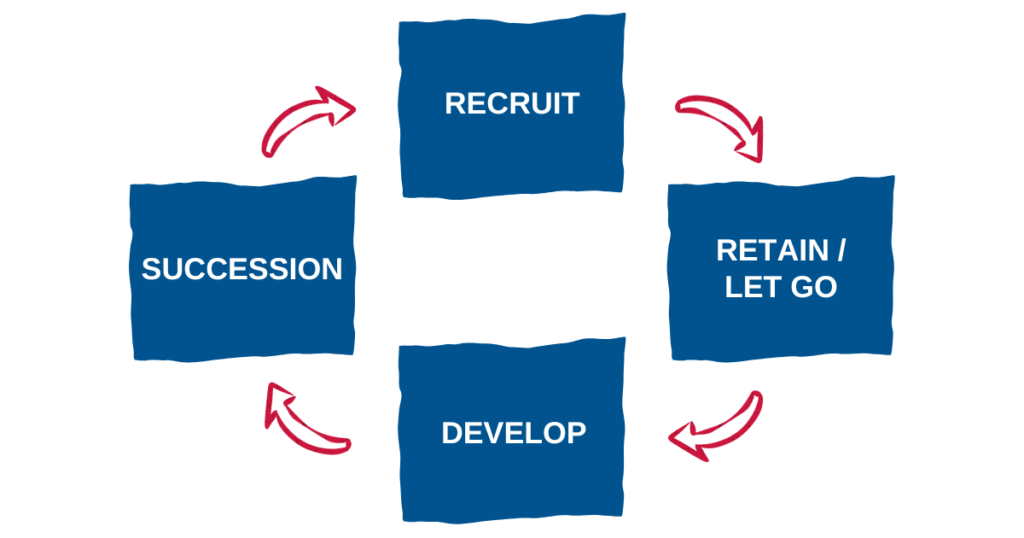Grow your own future employees
Building a team of talented, customer-oriented, engaged people who can run your business just how you want them to is a continuous process.
I speak to a lot of business owners who tell me that despite looking, the right [insert job title here] is just not out there – there are no good people to be found.
And they’re right!
If you think about it, what are the odds of you picking a 2 to 4 week window of time in which your next great [insert job title here] just happens to be looking for a new job, on that website (or whatever you use to advertise) and they stumble across your ad. Chances are slim, right? Especially if you’re looking for that special someone who not only has the skills but also the right attitude and fit for your business too.
It’s a bit like wanting new, A grade customers and only marketing for 4 weeks in any 12 month period. Sure, you might get lucky. But you might not. And who wants to trust to luck anyway?
What if we looked at it differently.
Firstly, how do you market your business to prospective employees? Job sites like Indeed or Monster do a great job of putting a lot of ads in one place but what makes your ad special? Why should the right people be better off working for you than anyone else? And how will they know that if your ad looks just like everyone else’s? When you market your business to new potential customers you think about these things. Why not for new potential team members?
Secondly, if you’re looking to grow your sales, you also look to sell more to existing customers. Maybe there’s another lesson there in terms of how we build a great team. A lot of the businesses I work with grow their own future employees. They know what they’ll need in terms of roles and competences in 3 years’ time and so they help their really good team members grow into those roles. It’s so much better and easier for everyone if you can do that.
At the same time, we have to recognise that not everyone is right for every role in every business. So when we have team members where the fit is not right, it’s better for all concerned if there’s a fair, reasonable and constructive way of helping those individuals find a role that is more suited to them – either within your business or elsewhere.
People don’t just become the right individuals for more advanced roles – they need access to the right training and development resources too.
There’s a theory someone explained to me once that people generally get promoted to their highest level of incompetence.
What this means is that if someone is a really good technician, they get promoted to team leader (because they’re good at the technician work). Then, if they get good at running the team (a very different skillset to most technician work), they get promoted to running a department (another very different skillset) and so on until they’re promoted into a role they can’t do and underperform in so the promotions stop. And there they are, at their highest level of incompetence, hating their new role and feeling like a failure. When in actual fact they are brilliant at the role they’ve just come from. What a waste.
What if we helped people develop into their highest level of competence? What if we train, develop and give people insight into future roles allowing them to always be at the appropriate level for what they want from their working lives and the skills and experience they can develop?
Finally, a lot of businesses find it really hard to recruit the right people because they’re looking for highly skilled recruits to fill a recently vacated position at very short notice. Not only do you have to contend with the pot luck scenario I described earlier on but now it’s even harder because the job spec is so specialised.
This is where looking ahead and planning role changes comes into play. Most people have heard of succession planning but very few businesses do it well. When it is done well, it completes the loop by making sure you’ve always got the next best [insert role here] waiting in the wings.
The model I’m describing looks like this:

…and it’s not just for large, people heavy businesses with hundreds of employees. The best time to start this is when your business is somewhere between 5 and 10 employees strong. It’ll pay huge dividends when you’re 10 times bigger…
We work with people who own companies to help them get clarity on these points and more. If you’re struggling with where to start why not schedule a conversation with us? It’s free and at the very least you’ll come away with a couple of ideas to help you move forward.
Arrange a call at a time to suit you here
Would you like articles and updates sent straight to your inbox? Subscribe to our mailing list





